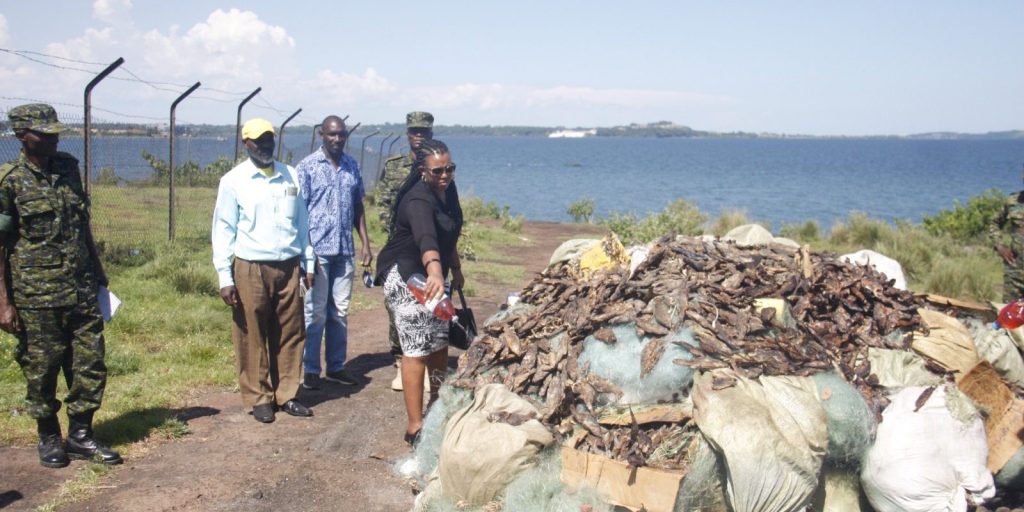The unchecked proliferation of water hyacinth is posing a significant threat to fishing activities in Uganda’s lakes, particularly in the Kasese District. Leaders in this region are grappling with the challenge of containing the rapid spread of this invasive aquatic plant, especially in the Kazinga Channel, a vital fishing ground connecting Lakes George and Edward.
Fishermen operating in these waters have reported adverse effects on their fishing endeavors due to the presence of water hyacinth. This green vegetation, floating on the water’s surface, not only obstructs fishing operations but also damages fishing gear such as nets and hooks.
According to Mr. Wilson Kizza Nzaghale, the Sub-county Fisheries officer for Lake Katwe, efforts to educate the community on the importance of eradicating water hyacinth have been largely ineffective. Despite awareness campaigns encouraging locals to uproot the weed, its rapid multiplication renders containment efforts futile.
Fishermen, such as Mr. Issa Twikirize from the Katunguru Fishing Site, have lamented the extensive damage caused by water hyacinth to their fishing gear, making their business unprofitable. He describes instances where fishing nets return empty, stripped of hooks and catches, due to the presence of this invasive plant.
Moreover, fishermen like Mr. Were Bakya highlight the additional financial burden incurred in combating water hyacinth. Attempts to manually remove the weed from fishing grounds result in increased time spent on the water and higher fuel expenses, exacerbating the economic strain on fishermen who often rely on loans to sustain their livelihoods.
Beyond economic ramifications, community leaders such as Mr. Ojede Kadiri express concerns about the facilitation of illegal fishing activities by water hyacinth. The proliferation of this invasive plant hampers marine officials’ access to certain areas, enabling illicit fishing practices that further disrupt the ecological balance of the region.
Mr. Erisania Kithaghenda, the Kasese District Principal Fisheries Officer, suggests that water hyacinth may have been introduced inadvertently by fishermen using nets from other lakes, potentially originating from Lake Victoria. Despite efforts to address the issue, including reaching out to the Ministry of Water and Environment for assistance, a comprehensive solution remains elusive.
In response to the growing threat posed by water hyacinth, Ms. Harriet Okomo, a project officer at Mobb Initiative for Sustainable Development, advocates for a multi-faceted approach. Drawing on successful initiatives in places like Kisumu, Kenya, she emphasizes the importance of community involvement, mechanical removal of the weed, and exploring alternative uses such as crafts production to incentivize eradication efforts.




















